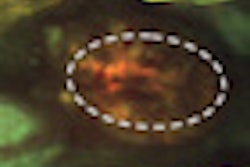
The scientific literature does not conclusively prove that routine visual screening for oral cancer increases detection and prevention, according to a new Cochrane review (Cochrane Database of Systematic Reviews, November 2010, Issue 11, CD004150).
However, the authors of the review do believe that routine screening may be effective.
— Diana Messadi, DDS, MMSc, DMSc,
University of California Los Angeles
The team examined studies of visual screening programs for oral cancer published between 1950 and 2010 and found only one randomized, controlled trial that met all of their inclusion criteria. There were no randomized, controlled studies of the use of adjunctive approaches such as toluidine blue, brush biopsy, or fluorescence.
The single randomized, controlled trial was conducted in Kerala, India, between October 1995 and October 2004 and involved 191,873 patients (Oral Oncology, September 2003, Vol. 39:6, pp. 580-588; Cancer, February 2000, Vol. 88:3, pp. 664-673; Lancet, June 2005, Vol. 365:9475, pp. 1927-1933). The population comprised all healthy people age 35 years and older living in the rural areas surrounding Trivandrum. The investigators excluded those who were bedridden, suffering from active tuberculosis or other debilitating diseases, or people already diagnosed with oral cancer.
They found a 43.7 crude oral cancer incidence rate per 100,000 individuals screened for oral cancer. The rate was 37.6 per 100,000 in people who were not screened. The proportion of cancers at stage I and II were 41.5% and 23.4%, respectively (p = 0.004).
The overall crude mortality rates from oral cancer per 100,000 individuals in the two groups were 16.4 and 20.7, respectively. The survival rates among screened subjects was 50% and 34%, respectively, among controls (p = 0.009). The mortality rates among high-risk men -- those who used tobacco, alcohol, or both -- was 24.6 per 100,000 in those who were screened and 42.9 per 100,000 in those who were not (p < 0.05). The mortality rate was also lower among high-risk women who were screened, but not statistically significantly so.
Serious biases
However, lead author Paul Brocklehurst, BDS, PhD, of the University of Manchester School of Dentistry, and his colleagues identified several serious potential biases in the study. These included a lack of standardized diagnostic criteria, the absence of outcome data blinding, only a 63% rate of compliance with the referral and no active follow-up, and only a minority of subjects being biopsied to confirm the diagnosis of a potentially malignant oral disorder.
Dr. Brocklehurst and his co-authors concluded that the positive results from the trial suggest that visual examination may reduce mortality within a population-based screening program. "However, this statement needs to be read with caution given the potential sources of bias identified above," they noted.
The investigators in the original study found no statistically significant differences in the age-standardized oral cancer mortality rates between those who were or were not screened, although they did detect a significant reduction in mortality between high-risk individuals in the two groups. But the Cochrane review authors again pointed out that because this study had a number of significant weaknesses, the findings cannot be extrapolated to other populations.
They recommended further randomized, controlled trials. And since the single randomized trial did show some benefit and there is no evidence of harm, "regular, opportunistic screening by visual examination applied by qualified healthcare providers for a high-risk group might be effective in achieving an improvement [in] outcome," they wrote. "Systematic examination of the oral cavity by the general dental practitioner or physician should remain an integral part of their routine daily work."
Diana Messadi, DDS, MMSc, DMSc, of the University of California Los Angeles School of Dentistry said she supports oral cancer screening in general practice.
"It is well-known that the stage of oral cancer diagnosis is very important in prognosis; early detection is the key to better prognosis and less morbidity and mortality," she told DrBicuspid.com. "In my opinion, visual examination, oral cancer screening, and subsequent referral to oral cancer specialists such as oral medicine specialists and oral surgeons for any suspicious lesion should be the recommended criteria for oral cancer screening."
Dr. Brocklehurst agreed.
"I personally believe that screening should be undertaken in general dental practice, but this is a personal opinion," Dr. Brocklehurst told DrBicuspid.com, pointing to an informal literature review he led that supports opportunistic screening of high-risk individuals in the primary care environment (Future Oncology, February 2010, Vol. 6:3, pp. 299-304). "However, the purpose of a Cochrane review is to systematically analyze the available literature according to strict quality criteria in order to form an unbiased judgment."
Copyright © 2010 DrBicuspid.com



















